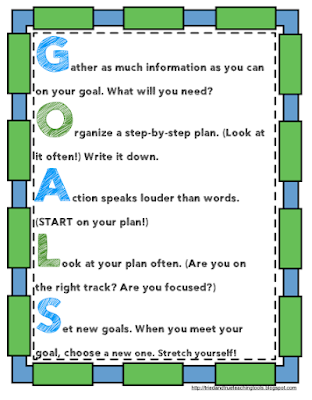First week back after winter break. . . what a week! With our classroom numbers fluctuating due to students quarantining or testing positive, and so much uncertainty, diving right into the curriculum was not an option. We went back to the basics: what do we need to improve in?
Goal setting is often such an abstract idea for kids. I asked the class what they thought we needed to work on together. Wow, did they have a lot to say! They had such buy-in and were taking ownership of our class. We drew a quick bubble map of these needs, then I asked them to prioritize the needs (with justification). As they verbally began to share their thoughts and tried to persuade their classmates, we realized that several of these goals could be group together.
After grouping items, the class noticed that many of these identified areas had to do with them wasting time. So they worded our class goal: Use time wisely. I divided a sheet of butcher paper into 4 columns:
- What our goal will look like/sound like
- Evidence (How will we KNOW we met our goal?)
- Plan (How will we accomplish this goal?)
- Daily or weekly evaluation (as a fraction bar to show progress)
Breaking our class goal into parts is key to students understanding that a goal is not a wish. We do not wish we could be quiet. (Admittedly, I do wish they'd be more quiet; LOL) We do not wish to have more free time, etc. There needs to be a plan!
Since all students are involved in setting our plan, they remind each other specifically what to do. As you can see from our evaluation, we still had a ways to go in meeting our goal, but we did make progress. We kept focusing on this one class goal until it was met, then we returned to our "needs" bubble map and picked our next goal. As my students become better at making a plan for meeting a realistic goal, we then apply this to setting goals for our work and improving as learners. You can grab this free goal setting chart
HERE or by clicking on the GOALS image below:

Come back next week to read about which books I use to teach goal setting! Find more teaching ideas by visiting the blogs below.







No comments
Post a Comment